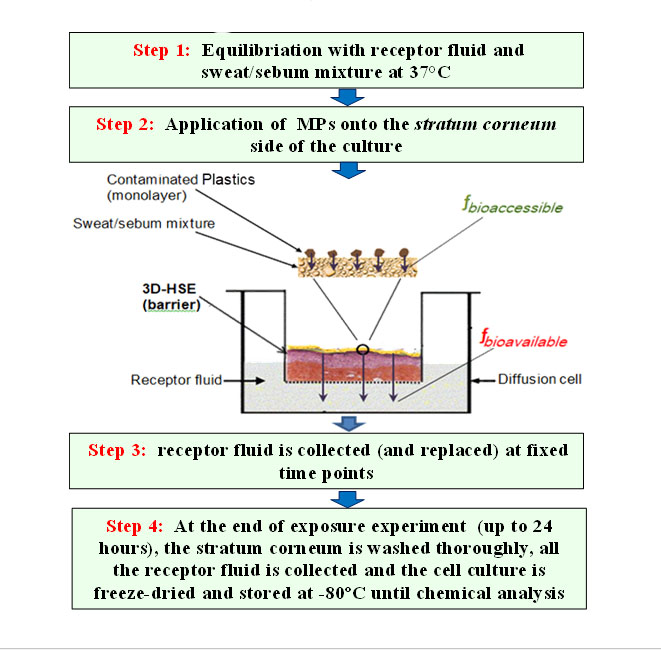• Polybrominated diphenyl ethers (PBDEs) enter blood stream in 24 hrs
• Chemical is added to many plastic household items for fire retardant properties
• 3D-printed skin made from human cells used in exposure testing
Cancer-causing flame retardants found in everyday things like plastics, furniture, fabrics and electronics can be sucked up by the skin and absorbed into the bloodstream in 24 hours, scientists have found.
A cutting-edge 3D-printed skin model was used in an exposure study in the journal Environment International, shedding fresh light on the potential risks these pervasive pollutants pose.
And sweatier skin sucks up more of the chemicals, polybrominated diphenyl ethers (PBDEs), than dry skin when microplastics they’ve been added to come into contact with the skin.
The study, from Brunel University London and the University of Birmingham, is the first to spotlight skin absorption as a potentially risky route to human exposure to toxic additive chemicals found in microplastics.
“We confirm for the first time that human exposure via skin contact with microplastics containing PBDEs contributes to the human body burdens of these toxic chemicals,” said Brunel exposure scientist, Dr Ovokeroye Abafe.
“These results provide important experimental evidence for regulators and policy makers to legislate for microplastics and safeguard public health against such exposure, which contributes to the human body burdens of toxic additive chemicals linked with causing cancer and disruption of the endocrine system.”
Microplastics, tiny plastic particles measuring less than five millimetres, have been found in various human body parts, raising growing worries about their potential health risks. Because scientists don’t know how toxic they are to humans, they are hard to regulate. But studies on oysters, fish, mice and fleas show microplastics scramble reproductive hormones, alter feeding patterns and cause liver damage.
Flame retardants such as PBDEs are a big worry because in humans they are known to cause cancer and disrupt hormones. They’re regularly added to plastics and despite bans on certain mixes of PBDEs, they’re still an environmental risk.
Chemicals added to microplastics can leach out into human sweat, scientists proved last year. This new study is the first time scientists show PBDEs inside microplastics can then cross the skin barrier and enter the bloodstream. As much as 8 per cent of the chemical enters the skin. Then after only 24 hours, up to 0.1 per cent of that is already in the bloodstream.

Cutting-edge 3D-printed skin models were used to monitor the exposure. Often used in medicine and to test cosmetic formulations, these are made from human keratinocytes and mimic exactly how human skin behaves.
The finding should pile pressure on governments and funders to examine how people absorb other chemicals additives found in microplastics and reassess legislation, hopes Dr Abafe, who ran the research at Birmingham University. “This is the first experimental evidence to show that certain additive chemicals linked with so many diseases – including cancer, endocrine disruption and reproductive problems – enter the human body from dermal exposure to microplastics.
“Unfortunately, there are myriads of toxic additive chemicals, ranging from plasticisers to stabilisers in microplastics, some of which are not regulated, that can potentially find their way into the human system. Also significant is the uptake of these toxic additive chemicals through other human exposure pathways such as ingestion and inhalation of microplastics, of which nothing is known on the body burden of these additives.”